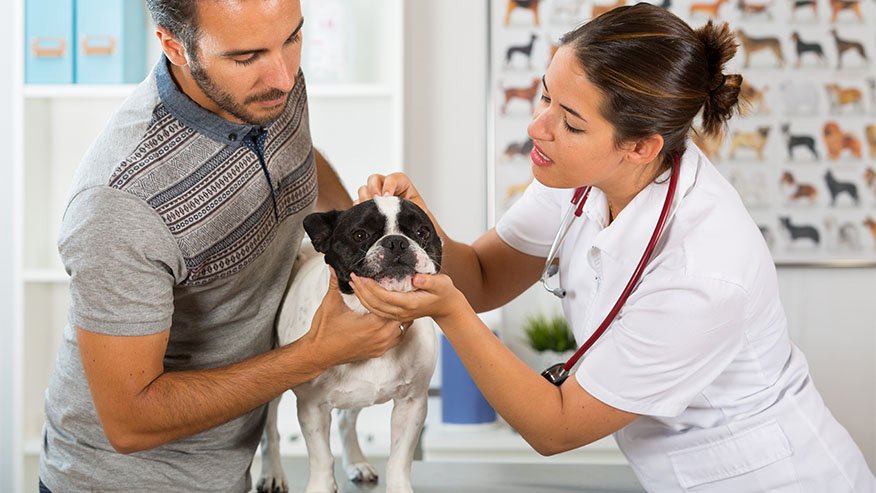
: If you’re anything like us, you’ve probably heard a lot about Giardia in recent years. It’s a nasty virus that can be deadly to both dogs and cats, and it’s on the rise in both populations. In this article, we’ll provide you with everything you need to know about Giardia in dogs and cats, including symptoms, treatment, and prevention. We hope this guide will help you safeguard your pet’s health and keep them safe from this nasty virus.
Giardia are actually protozoans (single celled organisms) and are commonly found in the intestines of many animals, including dogs. This microscopic parasite clings to the surface of the intestine, or floats free in the mucous lining the intestine. A few percent of dogs and cats will carry Giardia organisms and not show any signs of disease. Actual diarrhea, bloody or mucousy stool often accompanied by gas production is seen most often in affected puppies and kittens. Giardia can have a significant impact on the health status of malnourished and stressed pups and kittens. Dogs that are stressed nutritionally or by exposure or by strong physical activity may have a previously low grade giardia infestation flare up into a significant disease.
Giardia in Dogs and Cats
Life CycleGiardia occurs in two forms: a motile (swimming) feeding stage that lives in the intestine, and a non-motile cyst stage that passes in the feces. Encystment occurs as the parasite travels from the small intestine to the large intestine. The cysts are fairly resistant, and can survive for several months outside the animal as long as sufficient moisture is present. Mature cysts are usually found in the feces of infected animals. Animals become infected by ingesting these cysts. The ingested cysts then break open in the new host’s intestine to release the motile feeding stage (trophozoite). Giardia reproduce by a process of cell division (called binary fission).
Different species of Giardia are structurally very similar. It was customary to give each Giardia a different name when it was found in a new host. For examples, the Giardia in dogs was called Giardia canis; in cattle, Giardia bovis, and so on. Today scientists believe that only a few species occur, and each species can infect more than one host. However, more research is needed to identify each species and determine the hosts they can infect.
Giardia is transmitted from one dog to another through the ingestion of cysts in contaminated feed or drinking water. Cysts may also be found in streams or other water sources. The trophozoite stage may also be infective to dogs. This stage does not survive for very long after being voided in the feces. Therefore, it probably does not contribute significantly to the transmission of Giardia.
Human Exposure
Giardia can infect humans. The clinical signs are similar to those reported for dogs. The significance companion animals play as a source of infection for humans is still under study. Until it has been proven otherwise, we should assume that Giardia can be transmitted from one animal to another, and from other animals to humans.The significance of Giardia in dogs is still not certain. Although Giardia has been reported from dogs with diarrhea, it has also been reported in apparently healthy dogs. Clinical signs usually occur in dogs less than one year of age. But giardiasis may also occur in older dogs, or in animals suffering from other diseases, or those undergoing chemotherapy. Any immune suppressing factors in a dog or cat may allow a latent Giardia infestation to convert to a significantly important consideration.
Scanning electron micrograph of Giardia attached to the inner surface of the intestine.
Signs of Giardia in dogs and cats

Clinical signs range from none in asymptomatic carriers, to mild recurring diarrhea consisting of soft, light-colored stools, to acute explosive diarrhea in severe cases. Other signs associated with giardiasis are weight loss, listlessness, mucus in the stool, and poor appetite. These signs are also associated with other diseases of the intestinal tract, and are not specific to giardiasis; therefore positive identification of these organisms is an important aspect of a thorough patient work up.
Diagnosis is confirmed by finding the cysts or motile stages in feces. [Read the note from Dr. Dunn below.] A negative report does not rule out Giardia! Because cysts are only passed periodically, several fecal examinations may be necessary to diagnoses this parasite. At least three fecal samples, examined over a period of seven to ten days, should be examined. Special stains can be used, too, to assist in identifying these microscopic invaders.
Treatment for Giardia

Treatment for GiardiaThere are two antiprotozoal drugs commonly recommended (metronidazole and quinacrine). Contact your veterinarian for the drug of choice and treatment program. All infected animals should be treated whether or not they show clinical signs.
A Note from Dr. Dunn…
Not long ago I was the consulting veterinarian for Animal Food Services, Inc., a manufacturer of top quality raw meat diets for dogs and cats. An interesting situation occurred with a customer of the company and I would like to share the experience with you. The customer owned and operated a large boarding kennel and raised Golden Retrievers as show dogs. This individual had been feeding Animal Food Services meat diet for months and was very happy with the quite noticeable benefits the diet had on her dogs. Soon after a new shipment of the frozen meat was delivered and fed, some of her dogs began to have loose stools, were losing weight and had poor appetites. A number of stool samples were analyzed by her veterinarian; all were negative for parasites. The assumption was made that it must have been the new batch of frozen raw food that was causing some kind of food contamination problem… Salmonella, possibly, or E. coli. Understandably the kennel operator was very concerned about her own dogs and the welfare of all her boarders. She was about to withhold payment for a thousand pounds of frozen, raw pet food and was going to ask Animal Food Services to take it back. Plus she was going to stop feeding this raw food because she lost faith in the safety of the product. She also requested reimbursement by the food manufacturer for all her veterinary bills for the treatment of the dogs that were sick.
Animal Food Services asked me to consult with this kennel operator. She explained the circumstances, and the fact that “numerous fecal samples ruled out parasites” and that “this all started with that new shipment of food”. I asked a number of questions and gained insight into her high quality kennel operation. One of my questions was whether or not the dogs had access to any streams or nearby waterways. The answer was “Yes, but they have always gone down to the stream and that has never been a problem”.
I made a request: Submit a fecal sample from three affected dogs that were showing signs of trouble. Tell your veterinarian that these samples should be sent to a veterinary diagnostic lab and request special staining procedures be done specifically looking for Giardia. (I indicated that the manufacturer would pay for these samples.) She was to call me when the results came back.
Five days later I received a call from Animal Food Services. They thanked me. The three samples showed high numbers of Giardia. The food was not at fault at all! Ordinary fecal analysis done in most veterinarian’s labs do not reveal Giardia very well and often special stains are needed to display these elusive parasites. In this case, the dogs most likely acquired the parasites from the small stream from which they often drank. The kennel operator was much relieved to know the true cause of the problem… and so was Animal Food Services!
Looking for a comprehensive guide on Giardia in Dogs and Cats? Look no further! This blog provides all the information you need to know about this pesky parasite, including its symptoms, treatment, and prevention. By following the advice provided in this blog, you can keep your beloved pet healthy and safe from giardia! Do you have any questions that weren’t answered in this blog? Feel free to leave a comment and we will get back to you soon!
Frequently Asked Questions
What are the symptoms of Giardia in dogs?
Dogs with giardia infections may experience weight loss, persistent, unpredictable diarrhoea, and greasy stools. The stool may be mushy or watery, frequently have a greenish tint, and occasionally have blood in them. Excess mucus is frequently found in the faeces of infected dogs. Vomiting could happen occasionally.
What is the best treatment for Giardia in dogs?
The most typical drug prescribed to treat giardia is metronidazole. The dog’s body recovers more faster thanks to the antibiotic’s fight on the parasite. If your dog has giardia, it’s also crucial to constantly clean up after him.
How do you treat Giardia in dogs naturally?
Giardia cannot be cured successfully using any natural remedies. A prescription drug that your veterinarian might give you called metronidazole should start working immediately and efficiently. The infection must be controlled as soon as possible.






